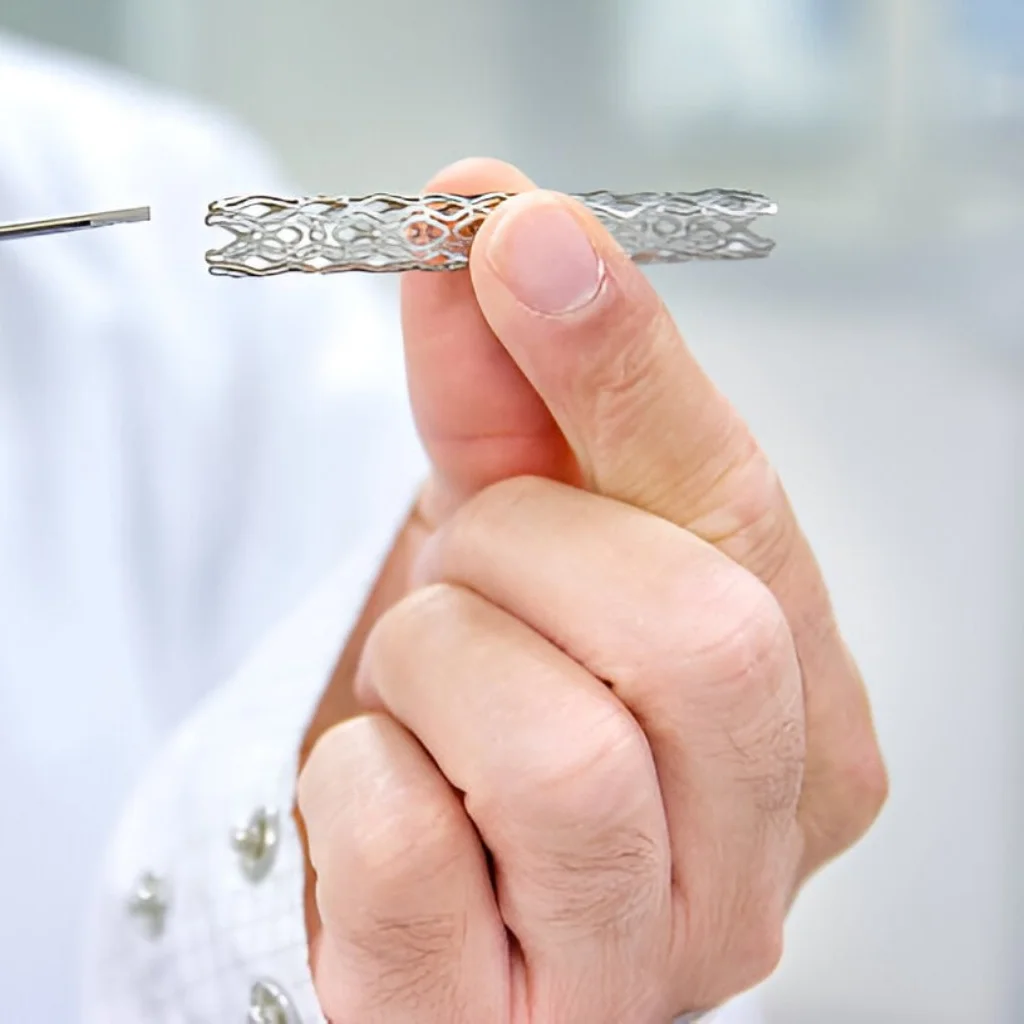Coronary Stent Placement
What Is a Coronary Stent?
A coronary stent is a small metal mesh tube placed inside a narrowed or blocked coronary artery to help keep it open and restore proper blood flow to the heart.
It is inserted through a minimally invasive procedure known as coronary angioplasty or percutaneous coronary intervention (PCI).
This procedure has become one of the most effective treatments for coronary artery disease and is often used to avoid open-heart surgery.

Why Is a Stent Needed?
Your cardiologist may recommend a coronary stent if:
You have chest pain (angina) due to narrowed arteries.
Tests show reduced blood flow to the heart muscle.
There is a blockage causing a heart attack.
There’s a need to improve oxygen supply to the heart after previous interventions.
Stents are designed to restore normal blood flow, relieve symptoms, and prevent heart muscle damage.
Types of Coronary Stents
There are two main types of stents used today:
Bare-metal stents (BMS): The original type, effective but more prone to re-narrowing of the artery.
Drug-eluting stents (DES): Coated with special medication that helps prevent tissue growth and reduces the risk of re-blockage.
Drug-eluting stents are now the most commonly used because of their long-term success rates.
How Is the Procedure Done?
Coronary stent placement is usually done under local anesthesia. The steps include:
The cardiologist inserts a thin, flexible tube (catheter) into an artery in the wrist or groin.
A small balloon attached to the catheter is inflated at the site of the blockage to widen the artery.
The stent is then placed in the artery and expanded to hold it open.
The balloon is deflated and removed, leaving the stent permanently in place.
The entire procedure usually takes about 30–60 minutes, and most patients can go home the same or next day.
Recovery After Stent Placement
After the procedure, patients are usually monitored for a few hours and can resume normal activities within a few days.
Some key recommendations after stent placement include:
Taking prescribed blood-thinning medications regularly.
Avoiding heavy lifting for at least one week.
Maintaining a heart-healthy diet and exercising moderately.
Stopping smoking completely.
Following your doctor’s instructions is essential to prevent complications and ensure the stent functions properly.
Possible Complications
Coronary stent placement is a very safe procedure, but like all medical interventions, it may have rare complications such as:
Minor bleeding or bruising at the insertion site.
Allergic reactions to the contrast dye.
Re-narrowing (restenosis) of the artery.
Very rarely, blood clots forming inside the stent.
Modern stents and medications have significantly reduced these risks.
Life After a Coronary Stent
Most patients live normal, active lives after stent implantation.
The stent does not limit daily activities, but it’s crucial to:
Continue prescribed medications.
Follow up with your cardiologist regularly.
Maintain a healthy lifestyle with balanced nutrition and regular exercise.
With proper care, a stent can last for many years and help prevent further heart complications.
Common Questions About Coronary Stents (FAQs)
1. Does having a stent mean I won’t need open-heart surgery?
In most cases, yes. Stent placement is an excellent alternative to open-heart surgery for patients with limited or localized blockages. However, if there are multiple or complex blockages, bypass surgery may still be required.
2. Can a stent become blocked again?
It’s possible but uncommon. With drug-eluting stents and proper medication use, the risk of re-narrowing is very low. Avoiding smoking and following a healthy lifestyle also greatly reduces the risk.
3. Is the procedure painful?
No. The patient is awake during the procedure but feels no pain because local anesthesia is used at the catheter insertion site. Afterward, there may be mild soreness or bruising, which usually resolves within a few days.
4. Can I live a normal life after having a stent?
Absolutely. Most patients return to their normal lives within days. Regular exercise, healthy eating, and taking prescribed medications help maintain long-term success and prevent new blockages.
5. How long does a stent last?
Modern coronary stents are designed to last many years, often for a lifetime. Regular check-ups with your cardiologist ensure that the stent remains open and the heart stays healthy.
